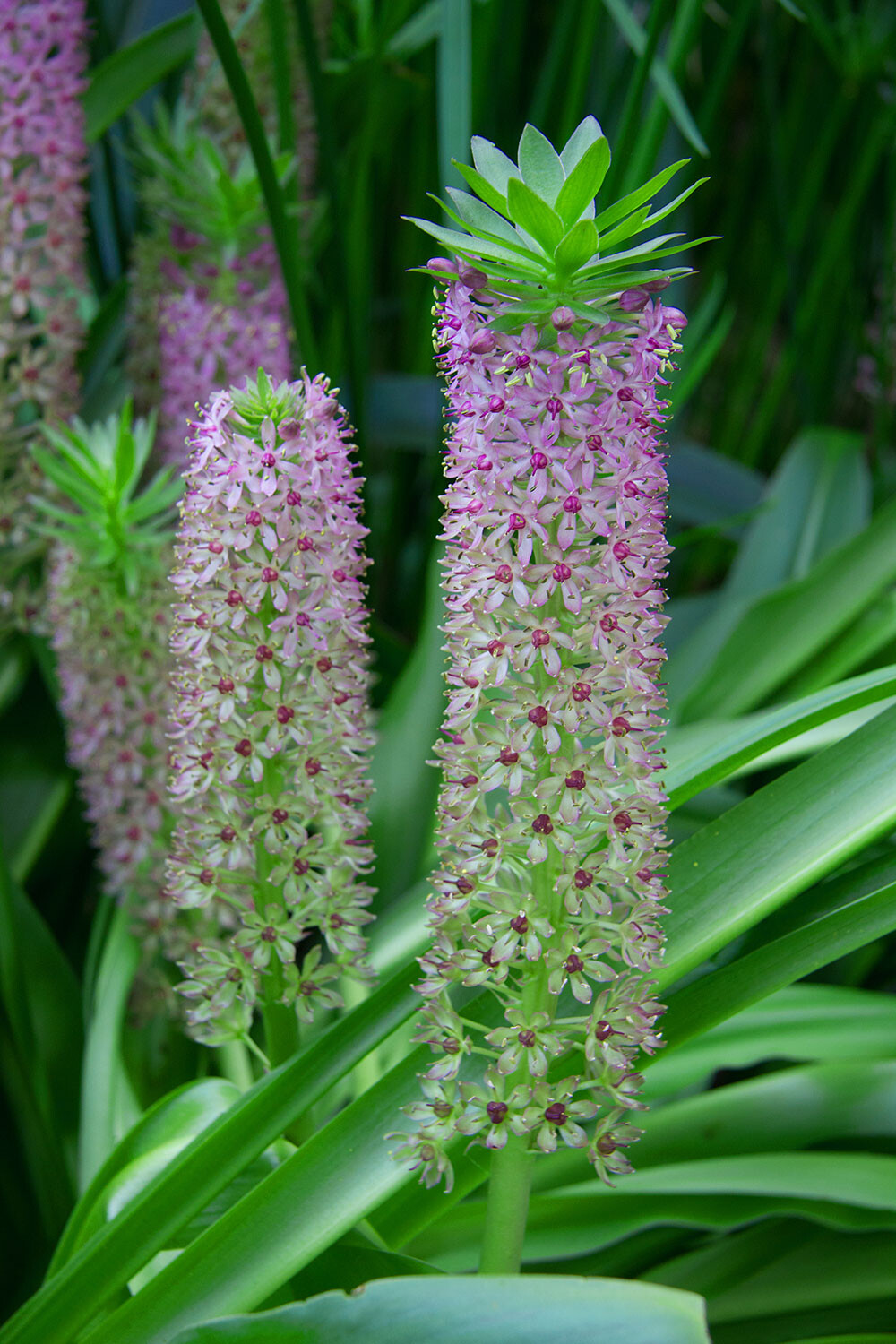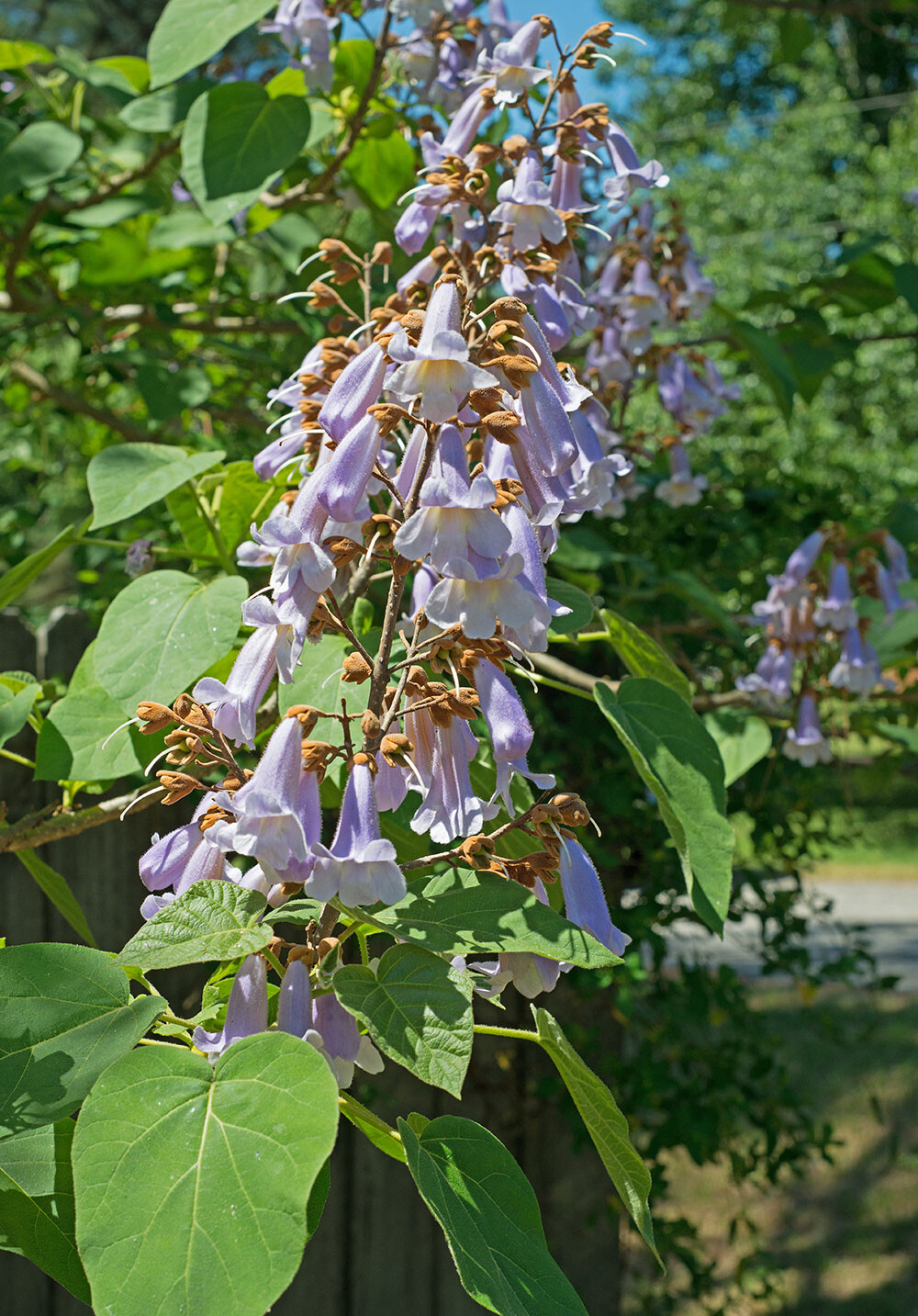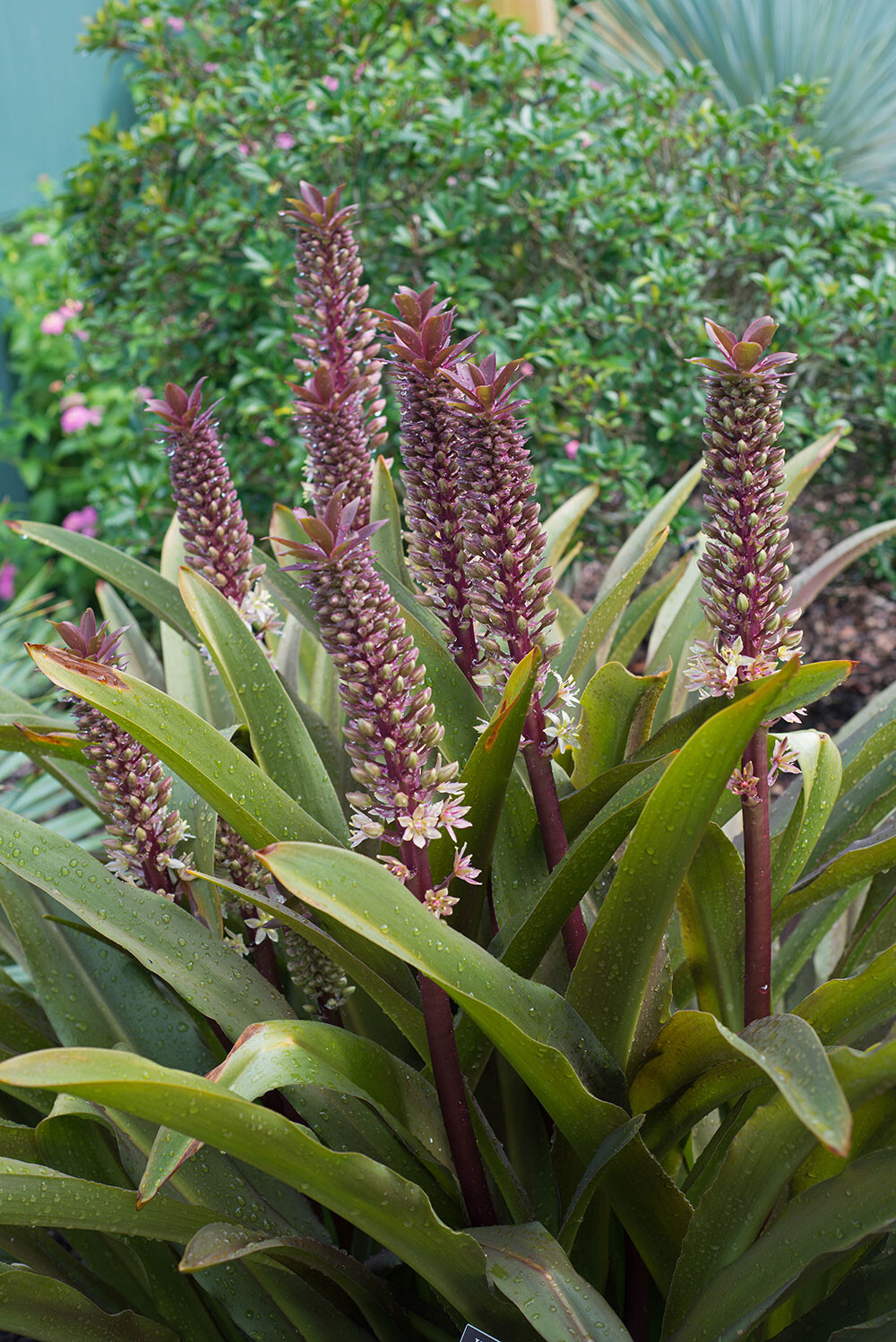Pick any ornamental perennial for your flower garden, and it will certainly be unique in its own way. However, there are some plants that insist on being unique in their own strange way.
The pineapple lily (Eucomis sp.) is a perfectly strange example. Soon after its bulbs are planted in the spring, long, weird, strap-like leaves emerge and arch outwards. This is followed in the summer by upright, alien-looking stalks stretching 2 to 3 feet tall that morph into vertical displays of flower towers, which, with some imagination, resemble long, skinny pineapples.
The bloom spikes start opening from their bottoms up, and they take their time doing it — normally over a month. Even as cut creations for indoor arrangements, this extended flower power remains, but do remember to change the vase water weekly.
Native to South Africa, pineapple lily is still hardy in our area. While partial to well-draining sites, it will generally do well in almost all soil conditions except soggy, boggy locations. In addition, it is rarely bothered by bugs and diseases, and will not be found on Bambi’s “Most Preferred” dining list.
The pineapple lily shows off best when exposed to at least six hours of sun each day. Also, since this strange beauty likes good drainage, it is a solid candidate for pot culture.

The blushing pink blooms of ‘Reuben.’
Pineapple lily bulbs should be planted pointed end up about 5 inches deep and spaced 8 to 10 inches apart. Speaking of bulbs — which are fairly easy to find at quality garden centers and online — for the best bloom displays, pick the largest you can find. And for even more bodacious blossom parades, water weekly and add a diluted solution of low-nitrogen liquid fertilizer about every three weeks through the summer.
The cultivar ‘Sparkling Burgundy’ has long been the attractive poster child of pineapple lilies, and for good reason — this dramatic dazzler’s show starts with deep maroon leaves snaking from the earth (which can fade to an off-green), setting the stage for bloom bursts of clustered stars tinged in purple. Want a subtler show? Opt for the cultivar ‘Reuben’ with rose-pink blooms on 18-inch-tall stalks embraced by modest green foliage.
By autumn, pineapple lilies will call it a season, drooping their leaves and settling in for a winter’s rest. At this time maintenance is simple: Cut out dead foliage, add protective winter mulch — and wait for the coming of yet another summer of strange beauty.

The empress tree is a beautiful beast.
The empress tree (Paulownia tomentosa) can lead many a gardener astray with its impressive springtime displays of fragrant, purple-tinged, foxglove-like flowers and ridiculously large leaves. Found along roadsides, in woodlands and even backyards, this fast-growing Asian import is capable of stretching to 40 feet tall and beyond. But it is an invasive brute that uses aggressive roots and weedy seeds to infiltrate and overwhelm native plant sites. So, if you are thinking about growing your own empress tree, snap out of it and consider native alternatives such as dogwood (Cornus florida), Carolina silverbell (Halesia carolina) or cucumbertree (Magnolia acuminata) instead.
To Do in the Garden
May
- If you haven’t started filling up the veggie patch with edible delectables such as green beans, cucumbers, squash, tomatoes, watermelons, cantaloupe, and peppers, now is still a good time to plant.
- Held off so far on sweet potatoes, okra, peanuts, or pumpkins? You are a smart gardener because these heat-seekers need warm soil for strong starts in the vegetable garden. Plunking them down in the vegetable garden by middle to end of this month will do just fine.
- To make room for more summer veggies, remove any spent or bolting plants of cool-season edibles such as broccoli, spinach, lettuce, or kale.
- May is a good month to start planting gladioli. The best location for the corms of these pretties is a well-draining, sunny site protected from the wind — many cultivars rate high on the flop meter. For faster development, scratch in a dose of time-release “bulb boost” fertilizer at planting time and water weekly after glad spikes start popping out of the ground. Mulching your growing gladioli is also a good idea.
- Bold & Bright
- Worth the Drive: Nil’s and Bellini
- Liquid Assets: Piglette Grisette (4.2%)
- Nonprofit Spotlight: Arts Access
- Shalimar Waffa: An Empathetic Art
- Notable Teens 2023
- Garden Adventurer: Strange Beauty: Pineapple Lilies
- Erica Chats: The Benefits of Daily Doses of Gratitude
- Small Business Spotlight: Gail and Grace Boutique
- On Trend: Permanent Jewelry
- Cary: The Amateur Sports Capital of North Carolina
- Things to Do: May 2023







